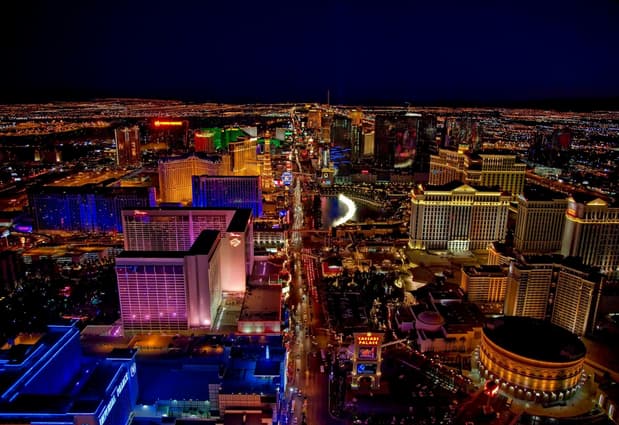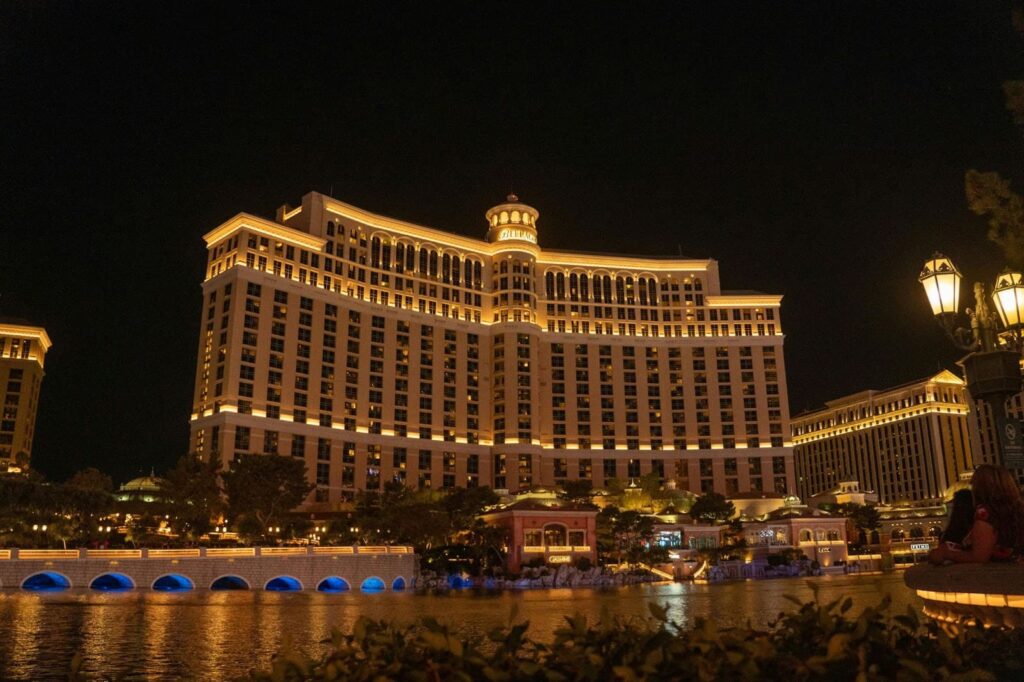Have you ever wondered what makes certain places sparkle with a particular kind of magnetic pull, promising untold riches and endless excitement? We’re talking about those luminous cities like Las Vegas and Atlantic City, places that seem to materialize from dreams, built on the promise of quick fortune. These aren’t just cities; they are vibrant, breathing characters in the grand, often contradictory, narrative of the American Dream. Through the revealing lens of documentary films and compelling historical narratives, we can truly see how these gambling hubs rose from nothing, drawing in millions with their siren song of possibility, only to reveal both aspirational heights and devastating lows. They offer a fascinating counterpoint, perhaps, to the quiet pursuit of luck in other corners of the world, like the hushed clicks of online roulette in Kuwait, reminding us that the human desire for fortune is a universal constant, expressed in vastly different ways. Their stories aren’t just about casinos; they’re about human ambition, desperation, and the ever-shifting landscape of opportunity.
The Genesis of Glamour: Building Deserts and Boardwalks
Building a shimmering oasis in the middle of a scorching desert or transforming a sleepy seaside town into a bustling entertainment mecca? It sounds like something out of a fantastical novel. Yet, that’s precisely what happened with Las Vegas and Atlantic City. Their origins speak volumes about audacious vision and the sheer, unyielding will to manifest a dream, however improbable. The early days of Las Vegas, just a dusty railway stop, then boom, a dam project brings workers, and suddenly, the stage is set for legal gambling. Or Atlantic City, a resort town that embraced gambling as a way to revive its fortunes. These places weren’t accidents; they were meticulously planned and constructed to embody a specific fantasy, designed to lure visitors with promises of escape and excitement. The early figures involved, from resourceful entrepreneurs to architects and engineers who navigated the harsh environments, were nothing short of visionary. They weren’t just building hotels and casinos; they were constructing entirely new worlds, attracting a wildly diverse population eager for new opportunities and experiences, all drawn by the irresistible magnet of possibility.
Visionaries, Mobsters, and the Early Architects of Chance
So, who were the masterminds behind these empires of entertainment? It wasn’t just a few savvy people in business; the early growth of these gambling meccas involved a fascinating and, at times, unsettling mix of characters. We’re talking about genuine visionary entrepreneurs who saw potential where others saw only sand or sea. These were the folks who took immense risks, pouring their fortunes and futures into these nascent cities. Think of figures like Bugsy Siegel, who envisioned the Flamingo in Las Vegas, a gleaming beacon of modernity that was, in its time, an astonishing feat of engineering and ambition despite his notorious ties. He wasn’t just building a casino; he was creating an entire experience, a fantastical escape. In Atlantic City, local political machines and burgeoning tourism magnates recognized the potential of leveraging the city’s coastal charm.
However, let’s not overlook the less savory aspects. The influence of organized crime on the nascent casino industry, particularly in early Las Vegas, is a well-documented and pivotal aspect of its history. It was a symbiotic, if sometimes violent, relationship. The mob provided capital and a specific “protection,” ensuring smooth operations and, crucially, a steady flow of untraceable cash. This era, often romanticized in popular culture, was a foundational period during which the lines between legitimate business and illicit enterprise were usually blurred. The money generated from the gaming tables was legendary, a veritable geyser of funds that fueled expansion and extravagance. And don’t forget the shrewd politicians, who, for better or worse, created the legal frameworks that allowed these gambling enterprises to flourish, sometimes disregarding the less savory aspects in exchange for economic development. This intricate web of ambition, ingenuity, and, yes, occasionally illicit activities converged to build the very foundations of what would become global entertainment powerhouses. It’s a complex, murky origin story but undeniably captivating, and it shaped the very DNA of these unique American cities.

The American Dream on the Felt: Casinos as Cultural Crucibles
There’s something inherently captivating about the idea of a single moment, a roll of the dice, a turn of a card, that can change your life forever. That’s why the casino industry became so deeply intertwined with the very fabric of the American Dream. For countless individuals, these glittering palaces weren’t just places to gamble; they were literal stages where the drama of aspiration played out daily. People flocked to Las Vegas and Atlantic City seeking wealth, sure, but also escape from mundane lives or simply a fresh start. The casinos became potent symbols of boundless possibility, places where the ordinary person could, perhaps, defy the odds and strike it rich. This pervasive belief in instant fortune, the idea that one big win could solve all your problems, fueled the engine of these cities. Documentaries often capture this raw hope, showing us faces alight with anticipation, the tangible tension in the air as fortunes hung in the balance. The casino, then, wasn’t just a building; it was a powerful cultural crucible where hopes were either magnificently realized or utterly shattered, echoing the grand, often elusive promise of the American Dream itself.
Beyond the Glitz: Documenting the Diverse Populations Attracted
When we think of Las Vegas or Atlantic City, our minds often jump straight to the high rollers and the bright lights. But look closer, and you’ll find a far richer tapestry of humanity. Beyond the gamblers, these cities attracted a surprisingly diverse array of people: dedicated workers who kept the machines humming and the drinks flowing, dazzling performers who brought the stages to life, ambitious dreamers who saw opportunities in every corner, and even families who made these bustling cities their home. Documentary films, with their unique ability to zoom in on individual lives, do a remarkable job of revealing these human stories behind the neon lights. They introduce us to the bellhops, the dealers, the showgirls, the chefs – all the cogs in the colossal machinery of the casino industry. These films showcase the vibrant and often struggling communities that formed around these epicenters of entertainment, reminding us that for every high-stakes bet, countless individuals worked, lived, and strived, often with modest means, to build a life in these unique American phenomena. They highlight the incredible resilience of people who uprooted their lives, sometimes from far-flung corners of the nation or even the globe, to chase a slice of the pie. These communities were melting pots where different cultures and backgrounds converged, all united by the common pursuit of a better life, however precarious that pursuit might sometimes be.

The Documentary Gaze: Capturing the Rise and Fall
The stories of Las Vegas and Atlantic City aren’t just linear tales of success; they’re more like roller coasters, with thrilling ascents and stomach-dropping drops. This cyclical nature – periods of immense prosperity followed by painful downturns and valiant attempts at revitalization – is precisely what makes them such compelling subjects for documentary films and historical narratives. These films aren’t afraid to delve deeply into unpacking the complex forces that shape these cities. They offer us a privileged peek behind the curtain, showcasing the dramatic transformations that have molded their identities over decades. Filmmakers, with their distinct directorial choices and nuanced narrative approaches, often present challenging narratives that defy simplistic interpretations. They don’t just show us the glamour; they also show us the grit, the struggle, and the resilience. It’s in these cinematic explorations that we truly grasp the volatile essence of these cities, seeing how they’ve continually reinvented themselves, often out of necessity, mirroring the broader American experience of reinvention and adaptation. Consider how documentaries capture the architectural shifts, the changing demographics, and the very spirit of these places as they navigate the ebb and flow of economic fortune. They provide an invaluable historical record, allowing future generations to understand the forces that shaped these unique urban landscapes.
Cinematic Case Studies: Unpacking Key Documentaries
Let’s zoom in on a few powerful examples that capture the essence of these cities’ trajectories. These aren’t just films; they’re immersive journeys into the heart of fortune and folly.
- “Casino” (1995), directed by Martin Scorsese: While a fictionalized drama, its meticulous historical narrative, based on real events and individuals, provides an unparalleled look into the mob’s influence on early Las Vegas. Its central thesis explores the rise and fall of mob control, showcasing how ambition and greed ultimately led to their downfall, making way for corporate oversight. Specific scenes, like the meticulous counting of cash in the money room or the brutal consequences of insubordination, vividly exemplify its portrayal of the city’s murky underbelly and the immense wealth being generated. This film, though not a pure documentary, offers a profound contribution to understanding the city’s complex cultural significance during its formative years, revealing the sheer scale of the operation and the colorful, often dangerous, characters involved.
- “Atlantic City” (1980), directed by Louis Malle: This film, although a drama, beautifully captures the melancholic atmosphere of Atlantic City as it transitions from a decaying resort to a burgeoning gambling hub. Its central thesis revolves around the fading glory of the old Atlantic City and the uneasy promise of the new casino era. Scenes of decrepit boardwalk hotels juxtaposed with the construction of gleaming new casinos perfectly exemplify the city’s identity crisis. The film contributes to our understanding by focusing on the ordinary people caught in this shift, highlighting the dashed hopes and desperate measures taken in pursuit of a dream, painting a poignant picture of a city struggling to redefine itself. It’s a subtle yet powerful commentary on the socio-economic impact of grand, often ill-conceived, urban renewal projects.
- “The Last Resort” (1998), directed by Dennis Hopper: This documentary offers a raw, unfiltered look at the lives of struggling retirees in South Beach, Miami, but it speaks volumes about the darker side of the dream that often draws people to gambling meccas. Its central thesis exposes the economic precarity and isolation faced by many elders seeking a final, sunny escape, usually finding themselves at the mercy of cheap living and fleeting entertainment. While not directly about casinos, it mirrors the vulnerabilities frequently exploited in gambling cities, showing how desperate hopes can be monetized. It contributes to our understanding of the broader “American Dream” narrative by revealing the less glamorous realities for those at the margins, often drawn to places that promise a quick fix, only to find themselves stuck in a gilded cage of desperation. The film is a poignant reminder that not every dream shines bright.

The Dark Side of the Dream: Folly, Addiction, and Economic Instability
For every glittering success story, there’s a darker, more somber narrative lurking beneath the neon glow. While these cities promise boundless fortune, they’ve also been fertile ground for profound folly, leaving a trail of broken lives and shattered dreams. The devastating outcomes of gambling addiction are a stark reality that documentaries don’t shy away from. We see the human cost: families torn apart, livelihoods squandered, and individuals spiraling into debt and despair. It’s a stark reminder that what begins as a harmless flutter can quickly morph into a relentless, destructive force, consuming everything in its path. These cities also highlight the exploitation of vulnerable populations, those desperate enough to believe that one big win is their only way out, often targeted by predatory marketing and alluring, yet ultimately ruinous, chances. Beyond the individual tragedies, the boom-and-bust economic cycles that have plagued these cities are a testament to their inherent instability. Documentaries frequently pull back the curtain on the social costs, showing us the rise in crime rates, homelessness, and the strain on public services. The dazzling facades often conceal a painful truth: for many, the promise of fortune ends in ruin, a stark contrast to the idyllic images usually portrayed.
Societal Impact and the Unfulfilled Promise
When the glitter fades, and the economic tides turn, the broader societal impact of the casino industry’s darker side becomes painfully evident. Think about urban decay in areas once bustling with tourists but now reeling from casino downturns. These aren’t just empty buildings; they’re monuments to unfulfilled promises of sustained economic prosperity for all residents. Local infrastructure, built to support a thriving industry, suddenly buckles under the strain of dwindling tax revenues, resulting in cuts to essential services. The fantasy of endless wealth often overshadows the reality that the jobs created are frequently low-wage, offering little security or upward mobility, and the benefits rarely extend beyond a select few at the top. Documentaries are particularly adept at capturing this stark discrepancy between the advertised dream and the harsh realities faced by many who called these places home. They show us communities grappling with unemployment, a shrinking tax base, and the social fallout when a single industry dominates and then falters. It’s a sobering reminder that even the most glittering dreams can cast long, dark shadows, creating a legacy of hardship that can take generations to overcome.
Legacy and Adaptation: What These Cities Tell Us About America
So, what are we to make of the enduring legacy of Las Vegas and Atlantic City? They are, in many ways, living laboratories of the American spirit, constantly adapting and redefining themselves in response to changing economic landscapes and evolving social attitudes. Las Vegas, for instance, has moved beyond pure gambling, diversifying into conventions, entertainment, and fine dining, trying to brand itself as a global leisure destination rather than just a gaming mecca. Atlantic City, despite its struggles, continues to grapple with reinvention, exploring non-gaming attractions, family entertainment, and other forms of development, forever seeking that elusive stable footing. The stories of these gambling hubs offer profound lessons about the mutable nature of the American Dream itself. They remind us that the dream isn’t static; it’s a fluid concept, perpetually reshaped by economic forces, cultural shifts, and individual aspirations. Their enduring appeal, despite their inherent contradictions, speaks volumes about our collective human desire for opportunity, excitement, and the enduring, sometimes misguided, belief in striking it rich. These “luminous cities” are more than just destinations; they are powerful parables of ambition, resilience, and the relentless pursuit of fortune and folly. They stand as monuments to both the soaring highs and the crushing lows of a uniquely American phenomenon.

Conclusion
We’ve journeyed through the captivating, often paradoxical, narratives of Las Vegas and Atlantic City, illuminated by the insightful lens of documentary films. We’ve seen their audacious origins, how they became intertwined with the very fabric of the American Dream, and how their stories reveal both aspirational heights and devastating lows. From the allure of quick fortune to the sobering realities of addiction and economic instability, these cities offer a multifaceted view of human ambition and societal impact. They remind us that the pursuit of luck, whether at a high-stakes poker table or through online roulette in Kuwait, reflects a universal human impulse. Ultimately, the complex relationship between these “luminous cities” and the American Dream provides enduring lessons about our shared history, our enduring desire for opportunity, and the inherent contradictions that shape the broader American phenomenon.




